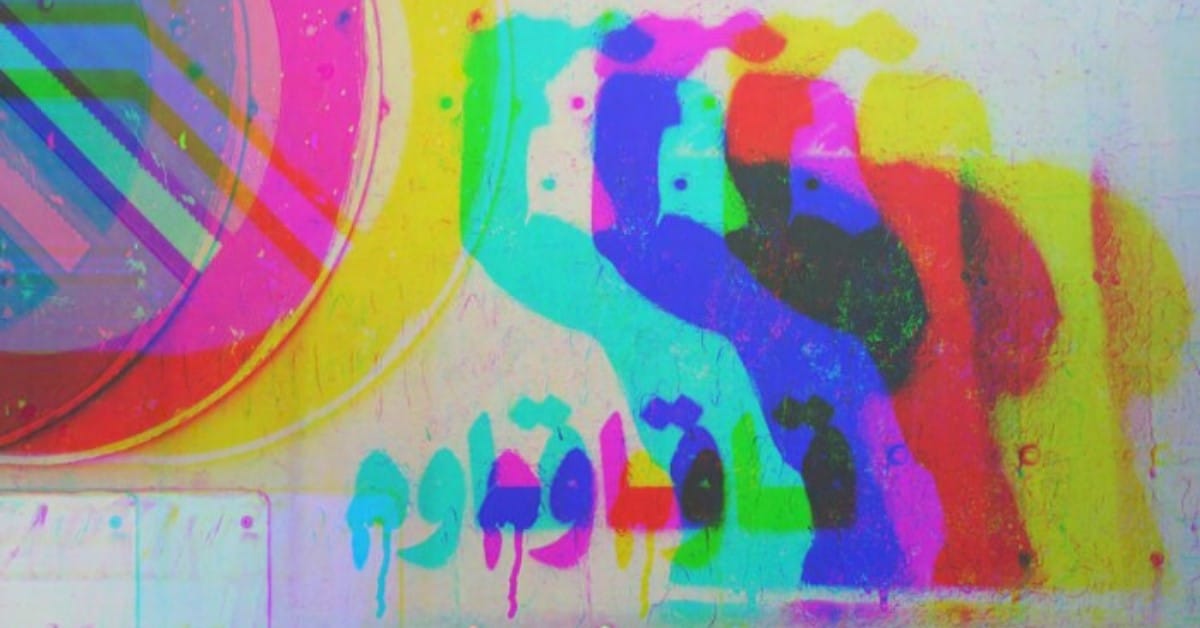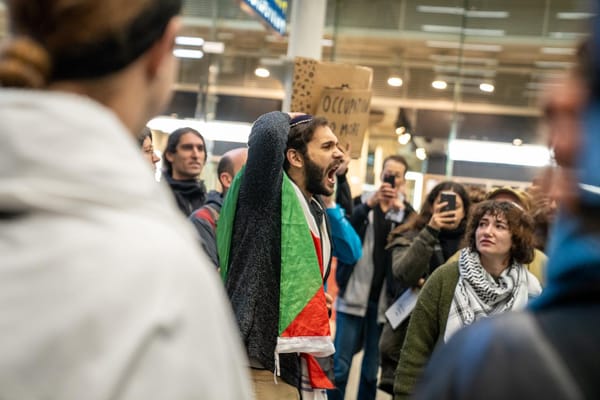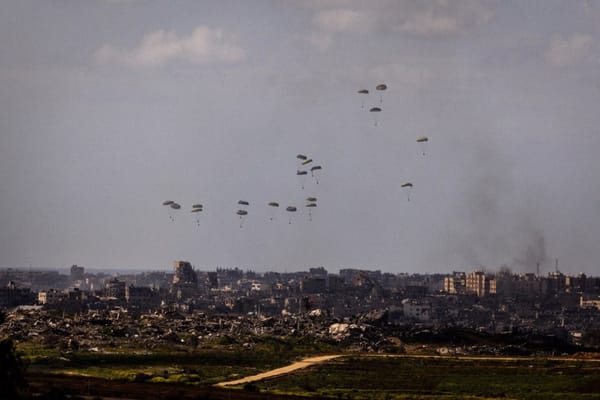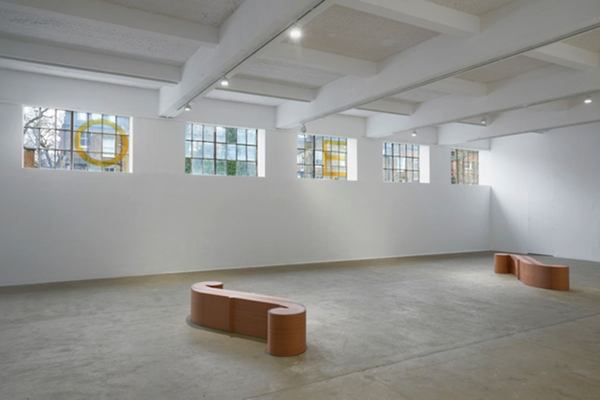"Resist": The political street art of Jerusalem
A reading of the politics written onto the city walls.

Jerusalem in 2020 is ugly and it is beautiful and it is always tense. It exists somewhere amidst the suffocation the Israeli poet Yehuda Amichai describes in ‘Ecology of Jerusalem’, its atmosphere “saturated with prayers and dreams”. There is the perpetual sense that nothing here is permanent, that the land might imminently vomit out its inhabitants as God warned the Israelites. Even the tranquility you can sometimes find in the city carries its own tension; it is inescapable.
The city is binational but it is not unified, contrary to the pronouncements of the government and the municipality. The separation between the two peoples who claim it is expressed most strikingly through differential status: almost all Jews have Israeli citizenship, while the Palestinians who comprise almost 40 per cent of the city’s population are for the most part “permanent residents”, a status that confers upon them select benefits, but only for as long as they are present in the city. They are also separated by infrastructure: different bus systems connect the Jewish and Palestinian neighbourhoods of East Jerusalem – which themselves experience wildly disparate funding from the municipality – to the rest of the city.
Beyond these structural layers of division, tension manifests at street level. Violence punctuates the city’s timeline, most recently the “Silent Intifada” of 2014 and the “Knife Intifada” of 2015-16. Yet the city is so heavily policed between spates of increased violence – especially in Palestinian neighbourhoods, where border police operate inside the supposedly united city – as to shatter any illusion that these periods (like the one we’re in currently) could be described as “quiet”.
Tension here also takes subtler forms. Street signs have been an arena of political contestation ever since Israel was established, though particularly in Jerusalem. Rather than using the city’s Arabic name (al-Quds), signs often awkwardly transliterate its Hebrew name into Arabic (which sounds something like “Urshalim”). There are also various examples of where, after 1948, the Jerusalem Municipality attempted to give previously Arab neighbourhoods of West Jerusalem Hebrew names that never caught on: Komemiyut for Talbiya, Ge’ulim for Bak’a and Gonen for Qatamon.
Political battles play out in unofficial signage, too. Tel Aviv, home to Israel’s liberal elite, is better known than Jerusalem for its street art, while the West Bank barrier famously features work by artists from around the world. Yet political graffiti proliferates in Jerusalem, taking on the flavour of the city: chaotic, subversive, extreme. In 2015, the “welcome” sign at the city’s entrance was altered to read “refugees welcome” in protest at the government’s plan to deport “infiltrators”. But on the whole, Jerusalem’s political graffiti takes the form of stencilled tags, the odd word or two scribbled on a wall, or – most commonly – bumper stickers.
In 2004, with the Second Intifada still raging, the Israeli author David Grossman traversed the country collecting slogans from these stickers for what became ‘Shirat HaSticker’ (‘The Sticker Song’), performed by hip-hop group Hadag Nahash. The slogans he included – such as “death to traitors” and “a state of halacha – the state is lost” – testified to the increasingly extreme nature of political discourse in Israel separating right and left, Arabs and Jews, and religious and secular.
Jerusalem is where all of these identities and allegiances collide. Walking around the city today, a decade and a half of conflict since Grossman wrote his song, slogans continue to compete on walls and signposts. The graffiti and stickers I’ve photographed, some of which are reproduced below, provide a window into the politics of the street in Jerusalem, 2020.
Bibi, Release Us From You And From The War
(Bibi, Shachrer Otanu Mimcha u’me’haMilchama)
The area outside the Prime Minister’s residence on Balfour Street is one of the main sites of protest in Jerusalem. A protest camp was set up there in June to demonstrate against the anti-democratic legislation being rushed through the Knesset (or bypassed entirely) under cover of coronavirus. With the arrival of the second wave of the pandemic and mass discontent with government income support, the camp has swelled to a full-blown national movement. Placards and graffiti litter the street, left by the thousands of protestors filling the area several times per week at the moment. Some (such as this one, in response to members of the government referring to the protesters as “anarchists”) are topical. This piece, which predates the current wave of protests, appears evergreen. That someone has tried and failed to scratch it out seems an appropriate metaphor.
Rabbi Kahane Was Right (HaRav Kahane Tzadak)
On the central King George Street near Paris Square, a sticker praising the ideology of extremist rabbi and former MK Meir Kahane has been stuck over an antifascist football sticker. Kahane’s party Kach and its successor Kahane Chai are the only parties ever to have been banned from standing in elections in Israel (they were outlawed altogether in 1994 after praising Baruch Goldstein, who had recently murdered 29 Palestinians at prayer in Hebron’s Ibrahimi Mosque). Kahane advocated the forced expulsion of Palestinians and the curbing of democracy for non-Jews. His ideology, known as Kahanism, has seen a resurgence on the Israeli far-right: the Otzma Yehudit (Jewish Power) Party has run on a Kahanist platform in the three recent elections. This sticker is covering a Hapoel Katamon F.C. sticker with the slogan “love football, hate racism”, an apparent allusion to the far-right fan base of Jerusalem’s biggest club, Beitar (whose ultras, known as La Familia, have been assaulting anti-government protesters in recent weeks).
Jabotinsky Was a Leftist (Jabotinsky Smolani)
Vladimir “Ze’ev” Jabotinsky founded the Revisionist Zionist movement in the pre-state Yishuv. The movement critiqued the Zionist leadership from the right, and is seen as the ideological forefather of today’s Likud Party. Despite being repudiated by the Zionist leadership for the unsavoury way he presented them, Jabotinsky’s ideas (in particular his argument that Zionist relations with the native Arab population should be characterised by a metaphorical “Iron Wall”) had a big influence on Zionism’s direction. Describing him as a “smolani” (leftist) – a word that has become derogatory in Israel since the Second Intifada – is likely a tongue-in-cheek attempt by left-wing activists to highlight how much more extreme the Israeli right is today than a century ago, when Jabotinsky was its leader. These stickers appeared over the past year, many of them on the back of cafe toilet doors (this one was photographed in Cafe Aroma in the upmarket Mamilla mall).
Leibowitz Was Right
(Liebowitz Tzadak)
This slogan – photographed here in the park in Rehavia that follows the old railway tracks – is a reference to Yeshayahu Leibowitz, one of the earliest and most prominent public intellectuals in Israel to warn against keeping hold of the territories captured in 1967. A religiously observant polymath who taught both natural sciences and humanities at the Hebrew University, Leibowitz argued that prolonged occupation of the West Bank and Gaza would lead to a corruption of Judaism; he later described Israeli policy in the Occupied Territories as “Judeo-Nazi” in character.
Death to Arabs
(Mavet la’Aravim)
Usually reserved for incidents of “price tag” vandalism in Palestinian villages by the hilltop youth (the young, radical and often violent wing of the settler movement), this graffiti was photographed on the wall of an old house in Lifta, an uninhabited village on the outskirts of Jerusalem. Lifta is one of some 400 Palestinian villages depopulated in 1948, most of which either no longer exist (like Deir Yassin) or have been repopulated (like ‘Ayn Karim/Ein Kerem). Jewish Israelis were moved into Lifta’s abandoned houses for a period until the early 1970s, when a housing company offered the residents a compensation scheme to leave. The area has since been declared a nature reserve, and the buildings all stand empty and covered in graffiti. The Arabic on the signpost directing people to the area has been scratched off.
United We Stand
Stickers like this one – found beside the light-rail tracks on Jaffa Street and ubiquitous around the city centre – pay tribute to the all-time high in US-Israel relations during the Trump administration. The city was filled with American and Israeli flags in the summer of 2018 following Trump’s decision to relocate the US embassy from Tel Aviv to Jerusalem. Contravening the longstanding international consensus that the city’s final status must be determined through Israeli-Palestinian negotiations, Trump claimed that his decision took Jerusalem “off the table”.
No Arabs, No Hummus
(Ein Aravim, Ein Hummus)
At the height of the Second Intifada, far-right activists popularised the slogan “no Arabs, no [terror] attacks”. The slogan became a common chant at far-right protests and proliferated on bumper stickers (featured in ‘The Sticker Song’), which were criminalised in 2002 under racism and incitement laws, following a petition by then Meretz MK Zehava Gal-On. The State Attorney’s Office filed indictments against the main activists involved in the slogan’s proliferation, including Itamar Ben Gvir, who now leads Otzma Yehudit. The font and colours of the original bumper sticker have been copied exactly in this light-hearted spin on the slogan, photographed here in an alleyway leading to Jaffa Street in downtown West Jerusalem.
Giva’t Sha’ul street sign
The Jerusalem municipality has sparked controversy in recent years by attempting to name streets around settler enclaves in East Jerusalem (such as the City of David in Silwan) after Jewish historical figures; one recent plan was rescinded in response to political pressure. Beneath the level of official decision-making bodies, it is possible to observe another phenomenon taking place: attempts by right-wing activists to cover up Arabic on signs around the city (which I’ve been documenting in this Twitter thread). Such erasure predates the Nation-State Bill of 2018, which downgraded the status of Arabic in Israel from an official language to one with “special status”. However, the ubiquity of stickers like this across the city today – especially those of Otzma Yehudit from recent election cycles (as pictured here, on a street in West Jerusalem) – suggests that the activists responsible have been emboldened by recent developments.
Eyad
These posters of Eyad al-Hallaq – which have been partially ripped off the wall either by municipal workers or (more likely) passers-by – appeared in Zion Square, downtown West Jerusalem, in the weeks following his murder in May. Eyad, a 32-year-old Palestinian with autism, was walking to his special-needs school in the Old City when he was shot dead after ignoring border police’s orders to stop at Lion’s Gate. The protests that his death sparked across the city drew parallels with the killing of George Floyd in the US, part of the rising global consciousness of how the police uphold systems of racial oppression. The leftist bloc in the current anti-government protests in Jerusalem has been calling for “justice for Eyad” in their chants and on their banners; meanwhile, activists are continuing to call on the police to release the CCTV footage of his murder.
Welcome to Apartheid, Jerusalem Against Annexation
(Medinat Apartheid, Yerushalayim Neged Ha’sipuach)
These slogans were found around the city centre on 1 July, the original date on which the new Israeli government planned to begin advancing plans to unilaterally annex parts of the West Bank designated for Israeli control in Trump’s “deal of the century”. While this piece was photographed in an alley in Nachlaot, a picturesque residential neighbourhood near West Jerusalem’s main marketplace, higher profile areas were also targeted, including the “I <3 JLM” sign in IDF Square popular among tourists (though that graffiti was swiftly removed by municipal workers). A few hours after this photograph was taken, someone painted over most of the graffiti, leaving only “Welcome to Jerusalem”. Under the same slogan in another location, “Death to Leftists” was scratched into the stone; both the original graffiti and later addition were removed soon after.
Trump Plan, High-Level Terror (Tochnit Trump, Terror b’Kamut Gvohah)
Dozens of these stickers appeared along Jaffa Street amidst the uncertainty surrounding what would happen regarding annexation on 1 July. At first glance, the imagery of a gun against the Palestinian flag suggests they were placed by one of the usual right-wing suspects, but the small print reveals an unexpected source: the Chasidic sect Chabad-Lubavitch. The stickers claim that the last Lubavitcher Rebbe Menachem Mendel Schneerson, who passed away in 1994 without a successor, would have opposed the Trump plan (in fact that he does oppose it, from beyond the grave) because it entails the creation of a Palestinian state; some settler leaders rejected the annexation plan for similar reasons. The rebbe was outspoken about his opposition to territorial concessions in general, which is perhaps what caused Chabad Chasidim to vote disproportionately for Otzma Yehudit in the September 2019 election.
Daughters of Israel for the People of Israel
(Banot Yisrael l’Am Yisrael)
This original piece was photographed near a cluster of leftist-run bars in central West Jerusalem. It depicts a figure wearing a KKK-style hood holding up a placard bearing the acronym JJJ, presumably for “Jews”. Also on the placard are the slogan (meaning, in essence, “Jewish women are for Jewish men”) and logo of far-right group Lehava, whose leader was indicted last year for incitement to terrorism, violence and racism. Lehava, whose name is an acronym for Preventing Assimilation in the Holy Land, was established to combat relationships between Jewish women and Arab men as part of a wider agenda towards racial homogeneity. The Arabic above the graffiti reads “Free Ahed Tamimi”, referring to the then 16-year-old Palestinian activist detained for eight months in 2017-18 for slapping an Israeli soldier in her village of Nabi Saleh.
Jews Wake Up, Israel Needs Transfer
(Yehudim Lehitorer, Yisrael Tzricha Transfer)
The “transfer” this sticker refers to is the prospect that some Israeli Arabs could be stripped of their citizenship, a lesser-discussed element of the Trump plan. The idea was popularised in 2004 by Avigdor Lieberman (leader of the secularist-nationalist Yisrael Beiteinu Party), who called for areas with large Palestinian populations just inside the Green Line to be “exchanged” for Israeli settlements in the West Bank (whose residents are already Israeli citizens). This sticker was photographed in French Hill, the first Jewish neighbourhood built in East Jerusalem following its conquest in 1967, located in such a way as to connect the isolated Mount Scopus to the rest of West Jerusalem.
Soldier = Terrorist
(Chayal = Mechabel)
Photographed in the ultra-Orthodox neighbourhood of Me’a She’arim, this graffiti symbolises the tensions between Charedi Jews and the Israeli state. Traditionally anti-Zionist on theological grounds, today some Charedi sects are functionally Zionist; Charedi politicians occupy ministerial roles while taking the title of “deputy minister” so as not to legitimise the state (go figure). However, ultra-Orthodox Jews remain exempt from serving in the military, something that has become increasingly contentious in Israeli society; Yisrael Beiteinu leader Avigdor Lieberman has ridden this wave of pro-conscription public sentiment to boost his own popularity in recent elections. As attempts to make Charedi conscription mandatory have intensified, so too have protests against it. The term “terrorist” used here is an unusually radical angle; Charedi opposition to conscription usually stems from a preference for full-time Torah study. However, in the same way that some anti-Zionist Charedim adopt the Palestinian flag as a symbol of their opposition to the Israeli state (for reasons that don’t go deep into Palestine solidarity), it’s possible that this discourse has similarly been taken from elsewhere (this time the radical left) and adapted for their own agenda.
Resist
(Qawam)
The masked figure depicted here is poised to throw what seems to be a Molotov cocktail, an occasional weapon of choice among militant Palestinian factions. It was photographed in the Palestinian neighbourhood of Sheikh Jarrah in East Jerusalem not far from the Damascus Gate. The Old City’s main entry point for Palestinians as well as many Charedi Jews, the gate is a regular flashpoint of violence in the city – several of the “Knife Intifada” stabbings took place in the area – and as a result, it has a constant police presence. It’s not clear when this graffiti first appeared (the stencil has also been used elsewhere), but it is perhaps surprising that it hasn’t been removed. ▼
Ben Reiff is a British student, writer and activist who has spent the past year in Jerusalem studying Hebrew and Arabic, and participating in Achvat Amim (Solidarity of Nations).




